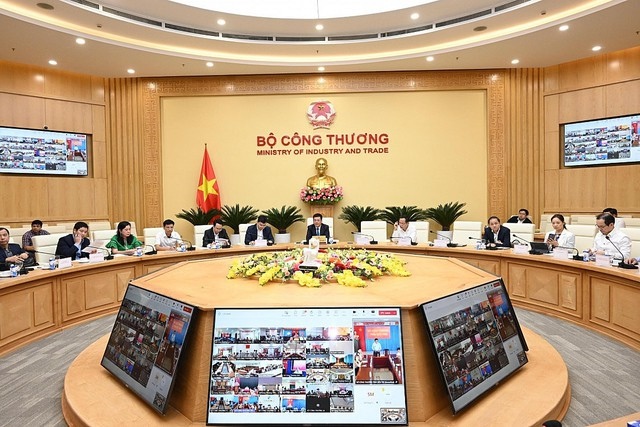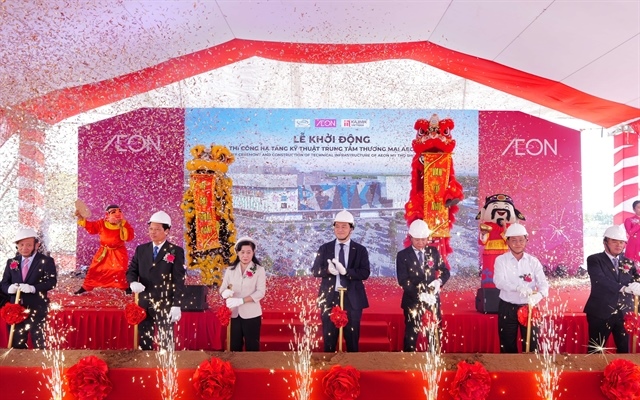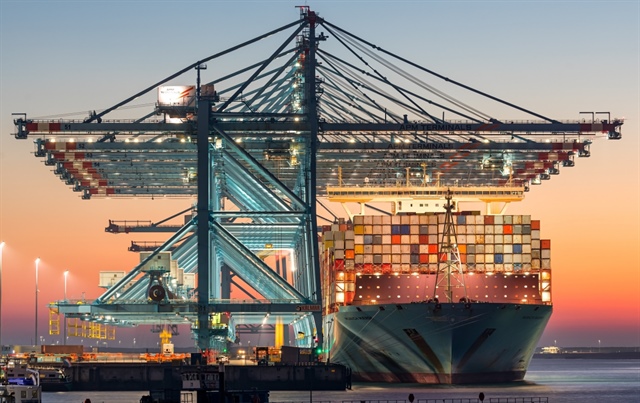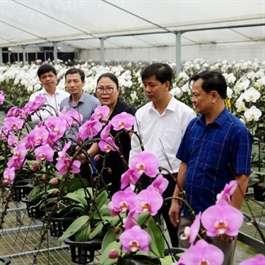Vietnam to produce clean hydrogen by 2030
Vietnam to produce clean hydrogen by 2030
Such a move would help Vietnam realize the country's goal of achieving net-zero emissions by 2050.
Vietnam is striving to reach a production capacity of hydrogen generated from renewable energy sources and carbon capture processes of approximately 100,000 to 500,000 tons per year by 2030, rising to between 10 million and 20 million tons by 2050.

Overview of the meeting. Photo: MoIT |
“This represents a clean, green energy source that plays an important role in the country's goal of achieving net-zero emissions.”
Minister of Industry and Trade Nguyen Hong Dien highlighted the objective at a Government meeting to discuss the plan to implement the Prime Minister’s decision No.165 on the strategy to promote hydrogen until 2030, with a vision to 2050.
The strategy aims to develop Vietnam's hydrogen energy ecosystem using renewable energy, covering production, storage, transportation, distribution, domestic use, and export. It aims to ensure energy security, meet national climate goals, promote green growth, and achieve net-zero emissions by 2050.
By 2050, the direction is to build a comprehensive energy industry ecosystem based on renewable energy, new energy, and green hydrogen energy, aiming to become a center for the clean energy industry and export of renewable energy and green hydrogen energy in the region.
Nguyen Viet Son, Director of the Oil, Gas, and Coal Department under the Ministry of Industry and Trade, stated that the strategy for hydrogen energy production must ensure continuity and consistency with the National Energy Strategy and other related strategies and plans and be dynamic and flexible to adapt to the global energy transition context.
“Developing hydrogen energy production along the value chain, including production, storage, transportation, distribution, and use of hydrogen, contributes to ensuring energy security, reducing greenhouse gas emissions, promoting green economic development, circular economy, and hydrogen economy,” Son said.
He expected the country to develop hydrogen energy production with a reasonable roadmap in line with the energy transition roadmap in Vietnam.
“The government would encourage the use of hydrogen energy in all sectors of the economy to reduce greenhouse gas emissions while establishing appropriate policies and incentives to promote the use of hydrogen energy in sectors such as power generation, transportation, and industries,” said Son.
Son also called for increased international cooperation to share experience and knowledge in developing the hydrogen energy ecosystem.
Minister Nguyen Hong Dien emphasized that the government's approval of the hydrogen energy development strategy is of special significance as it opens up new opportunities for Vietnam's energy sector to advance towards green, clean, and sustainable development.
“Leveraging abundant renewable energy sources such as solar and offshore wind power, Vietnam is poised to fulfill its pledge to achieve carbon neutrality by 2050, meeting both domestic and export needs. This is consistent with the Party's and State's vision for transitioning towards green energy and reflects global development trends and Vietnam's commitments made at COP26,” Dien said.
For the successful implementation of the strategy, Dien called for the authorities to update the principles and directions set out in the strategy to adjust, supplement, and integrate them into relevant national sectoral plans and provincial plans to ensure consistency and connectivity; at the same time, focusing on reviewing, adjusting, supplementing local sectoral plans, providing a basis for receiving and implementing investment projects in hydrogen energy production as regulated by law.
In addition, Dien stressed the importance for the government to issue feasible regulations, mechanisms, and policies to promote hydrogen energy development; at the same time, proactively build and adjust enterprise development plans to ensure compliance with the strategy; strengthen the mobilization of capital sources at home and abroad to implement investment projects in hydrogen energy, especially green hydrogen production projects, ammonia production, contributing to the realization of the viewpoints, goals, and development directions outlined in the approved strategy.



























